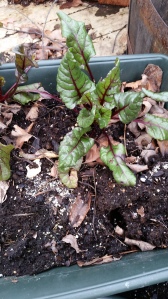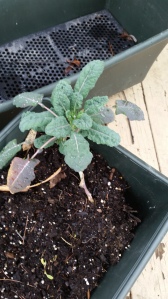The Shakers served plain food but it was nourishing and, from the recipes I’ve tried, flavorful. There was some overlap of course. Basil, for example, was used as a tea and an aromatic to prevent excessive vomiting. Rosemary was also used as a tea and its oil was made into a liniment.
Some of the other herbs are not so unsurprising. One of my favorites is for a Dandelion salad. (Seriously!) The mixture includes dandelion leaves, simmered until tender and drained, then put into a saucepan with egg yolks, cream, butter and other herbs such as mint, lemon thyme and so on. The mixture is put on slices of stale bread and fried and then seasoned with oil and vinegar and parsley.
Fish was poached with chamomile leaves or covered with chamomile sauce. (Make a roux with butter and flour (2 Tablespoons each), add a Cup of chicken stock, parsley, the chamomile leaves and add salt and pepper to taste,) Marjoram, basil, parsley and basil went into meatloaf, tarragon, summer savory, marjoram, chervil and thyme into chicken fricasee.
Hancock Village served an herb soup made up of chopped sorrel, chopped shallots, chervil, mint and parsley boiled in milk. Butter and salt and pepper are added to taste and the whole mixture poured over squares of toasted bread.
I want to add a note about the Shaker’s recipe for bread which I found in a James Beard bread book. It is so delicious I could eat an entire loaf. But I digress.
Another soup is apple soup, so tasty on a cool fall day. A quartered apple, cored but unpeeled, a quartered onion and a herb mix of marjoram, basil, summer savory and more combined with cinnamon is cooked in the top of a double boiler. The apple is removed when soft and the soup is strained. Cider and cream is added when ready to serve.
Some of these herbs and herb mixes can be purchased in the gift shops of the various museum communities and at Sabbathday Lake. Hancock Village had a mix that includes basil, parsley, marjoram, oregano, tarragon, thyme and more. It has been several years since I purchased my supply so I am not sure it is still available.



